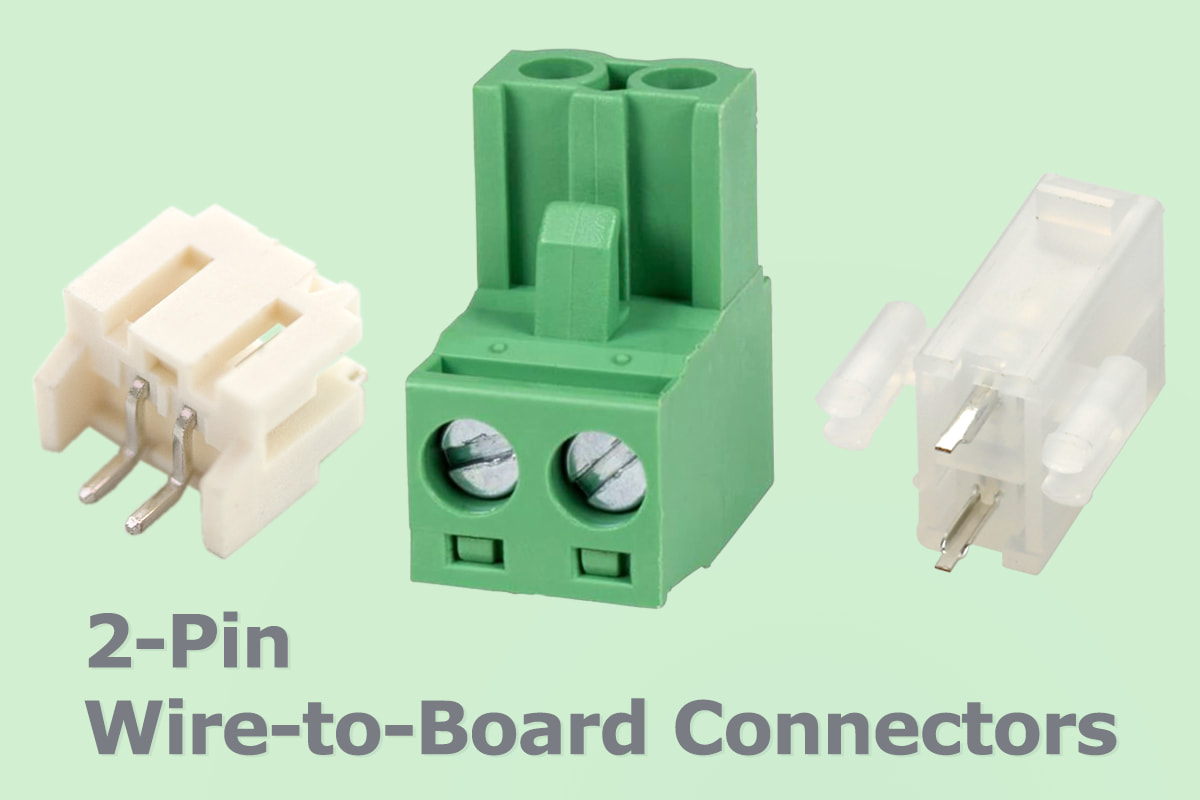Features and Benefits of 2-Pin Wire-to-Board Connectors

In the realm of electronic design and manufacturing, wire-to-board connectors play a vital role in establishing reliable and secure connections between wires and printed circuit boards (PCBs). Among the various options available, 2-pin wire-to-board connectors have emerged as a popular choice for applications that require a simple and streamlined interconnect solution. Let's explore the features and benefits of 2-pin wire-to-board connectors and their significance in modern electronic systems.
Compact and Space-Saving Design: 2-pin wire-to-board connectors are designed with a compact form factor, allowing for efficient use of space on the PCB. With only two pins, these connectors occupy minimal real estate, making them ideal for applications with size constraints or limited board space. Their small footprint enables designers to maximize PCB real estate and optimize the overall layout and functionality of the electronic system.
Easy and Secure Wire Termination: 2-pin wire-to-board connectors offer a straightforward and user-friendly wire termination process. These connectors typically feature screwless or push-in terminal blocks that allow for quick and easy wire insertion. The terminals securely grip the wires, ensuring a reliable and stable connection without the need for additional tools or complicated wiring procedures. This ease of wire termination simplifies assembly processes and reduces installation time.
Versatile Wire Compatibility: 2-pin wire-to-board connectors are compatible with a wide range of wire sizes and types. They can accommodate various wire gauges, from thin signal wires to thicker power cables, offering flexibility in terms of application requirements. Whether it's for low-power signals or higher current applications, these connectors provide a versatile solution for different wire types and sizes.
Secure and Reliable Connection: Despite their simplicity, 2-pin wire-to-board connectors provide a secure and reliable electrical connection. The connectors feature robust housing materials and terminal designs that ensure proper contact and minimize the risk of accidental disconnection. This reliability is crucial in applications where uninterrupted signal transmission or power delivery is essential for system performance.
Compact and Space-Saving Design: 2-pin wire-to-board connectors are designed with a compact form factor, allowing for efficient use of space on the PCB. With only two pins, these connectors occupy minimal real estate, making them ideal for applications with size constraints or limited board space. Their small footprint enables designers to maximize PCB real estate and optimize the overall layout and functionality of the electronic system.
Easy and Secure Wire Termination: 2-pin wire-to-board connectors offer a straightforward and user-friendly wire termination process. These connectors typically feature screwless or push-in terminal blocks that allow for quick and easy wire insertion. The terminals securely grip the wires, ensuring a reliable and stable connection without the need for additional tools or complicated wiring procedures. This ease of wire termination simplifies assembly processes and reduces installation time.
Versatile Wire Compatibility: 2-pin wire-to-board connectors are compatible with a wide range of wire sizes and types. They can accommodate various wire gauges, from thin signal wires to thicker power cables, offering flexibility in terms of application requirements. Whether it's for low-power signals or higher current applications, these connectors provide a versatile solution for different wire types and sizes.
Secure and Reliable Connection: Despite their simplicity, 2-pin wire-to-board connectors provide a secure and reliable electrical connection. The connectors feature robust housing materials and terminal designs that ensure proper contact and minimize the risk of accidental disconnection. This reliability is crucial in applications where uninterrupted signal transmission or power delivery is essential for system performance.





